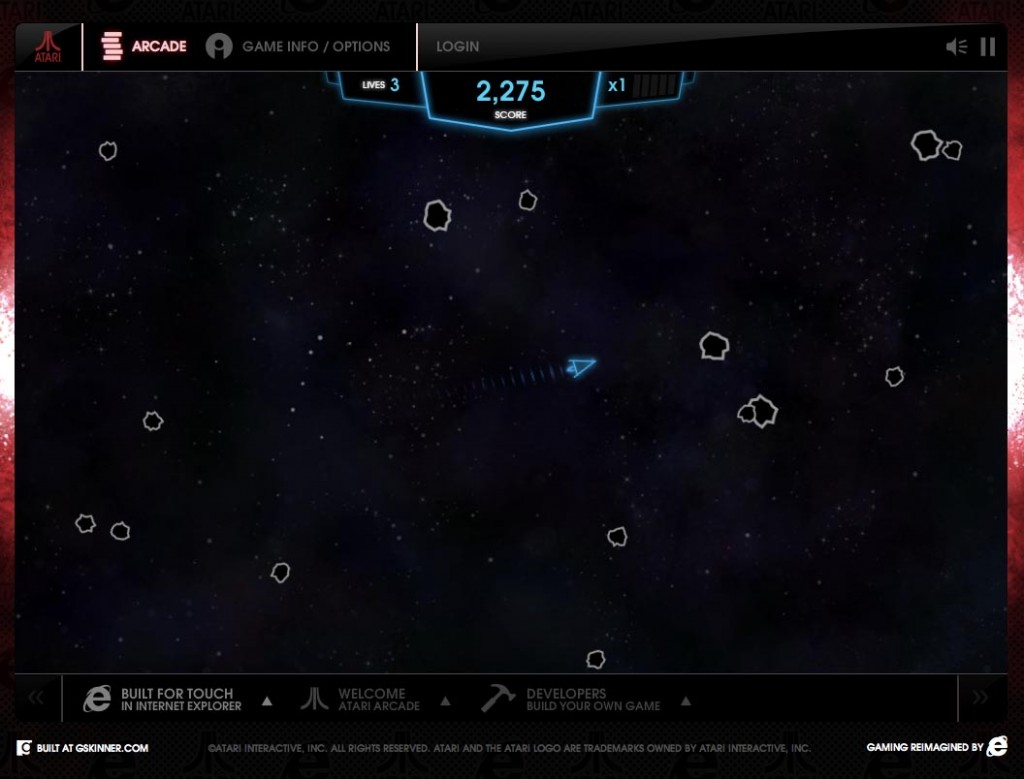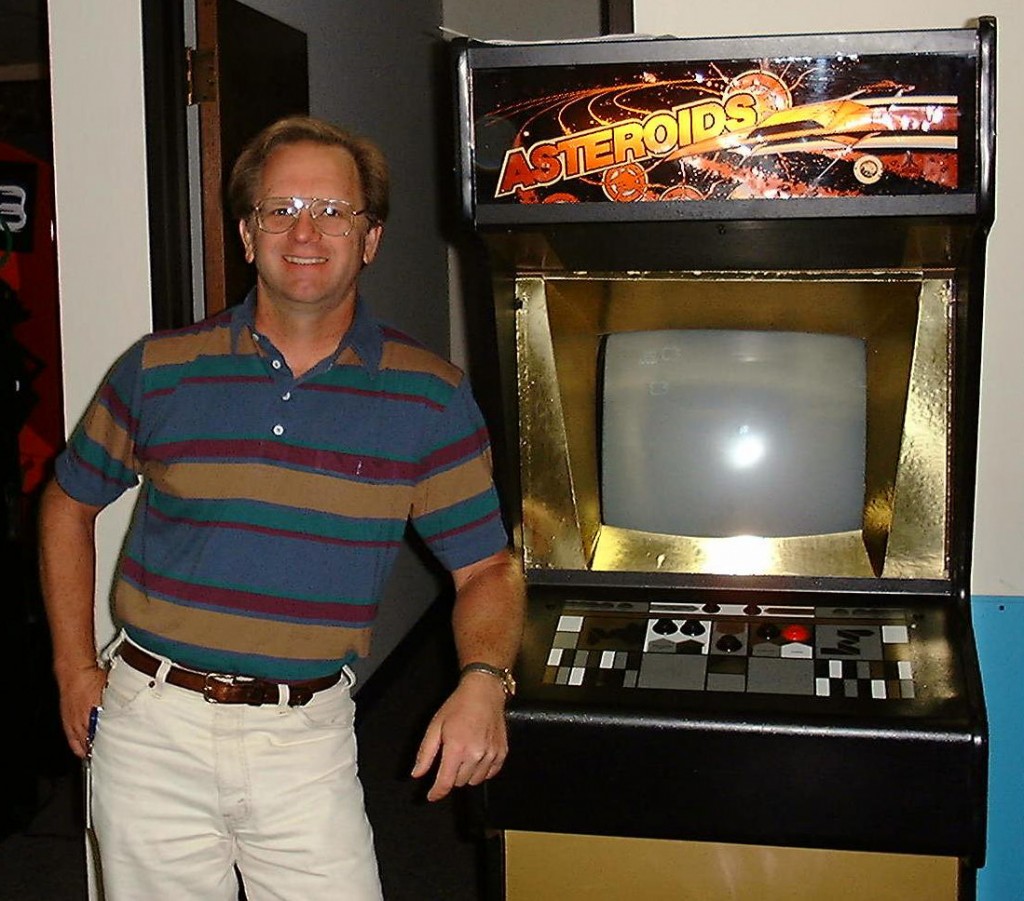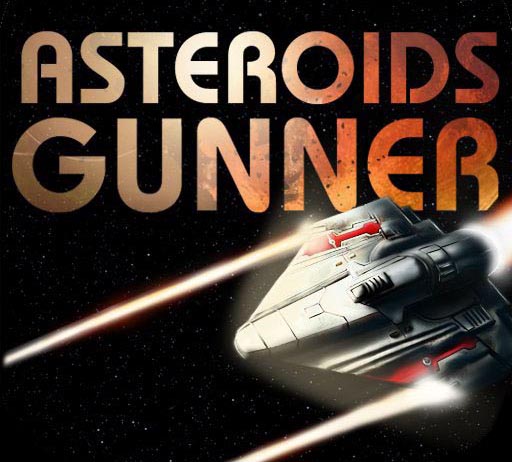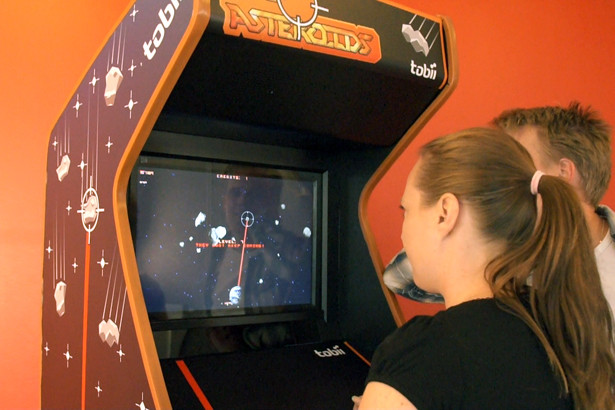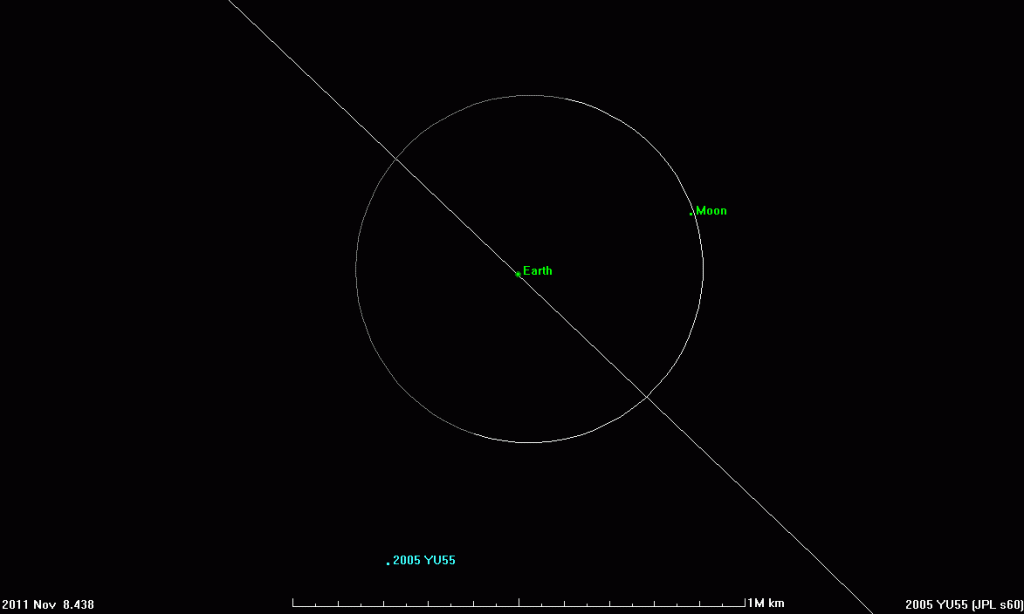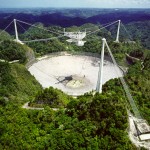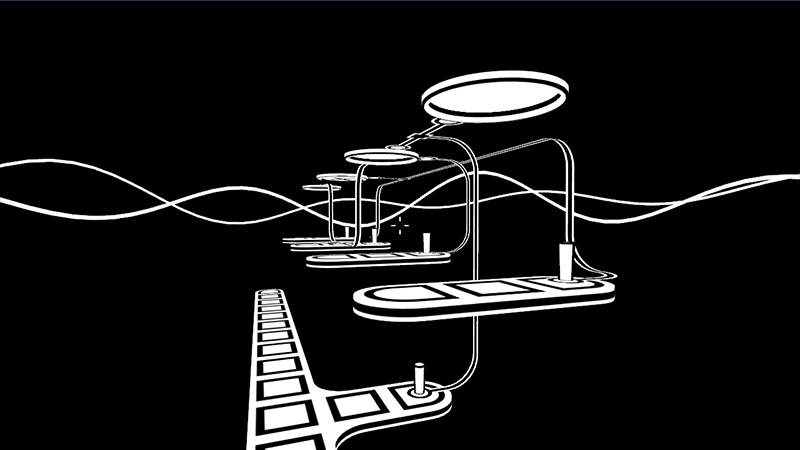Robotic Spaceship Departs Giant Asteroid (Real)
Posted on September 05, 2012It’s been just over a year since NASA’s Dawn spacecraft went into orbit around the giant asteroid Vesta, and today it leaves Vesta for the dwarf planet Ceres. The spacecraft took extensive photos to learn all about the asteroid, but didn’t blow it up. What gives, NASA?
Here’s an official “Farewell, Vesta” video: a fly-over compiled from images taken throughout the year. We asked JPL, and they said they’ll probably release the 3D data to the public once it’s all organized — which could be cool for 3D artists or designers. (Remember, kids, all NASA media is public domain). For more info about the mission, visit the official Dawn site.
Atari Dives Into HTML5 With Microsoft, Offers SDK
Posted on September 03, 2012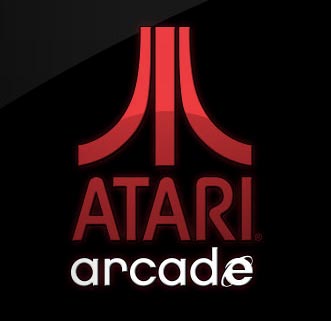 Atari is taking a new direction with its online activities, last week revealing a revamped online arcade and partnership with Microsoft.
Atari is taking a new direction with its online activities, last week revealing a revamped online arcade and partnership with Microsoft.
atari.com/arcade currently offers eight classic titles: Combat, Lunar Lander, Missile Command, Pong, Super Breakout, Yars’ Revenge, Centipede, and of course, Asteroids. The interface is a slick example of what you can do with HTML5 and a multi-touch device, being released as a showcase for Internet Explorer 10 and the Windows 8 Tablet. It works just as well on any other HTM5-capable browser or tablet, but you get ads.
Atari worked with gskinner.com on this project, who re-imagined and re-built the classic titles from scratch, using their CreateJS suite of Javascript libraries and tools. The resulting games vary in design: Pong has a clean arena look, Centipede renders you as a garden gnome defending your turf, and so on.
For Asteroids, they kept close to the original vectorgraphic style: the ship looks the same (although a color), the asteroids are different shapes but the same idea, and the lasers are nice, simple dots. The result is not too bubbly or over-complicated as modern games can be, and yet isn’t trying to make you feel like you’re playing on a lousy old TV. Thumbs-up from us.
The game play is nice and smooth, as is everything on the site. On a computer, you navigate with W-A-S-D or arrow keys, and fire with the spacebar. On a tablet, controls hover over the graphics. The action is basically the same as the arcade, with two differences: you can hold down the fire button to charge up and get more punch out of your laser, and there is no friction. In other versions of Asteroids, you eventually slow down after hitting the thrust button. Here you do not: you have to spin around and reverse-thrust to slow down. This takes a little getting used to, but it’s more like the real experience of shooting asteroids in friction-free space. Clearly based on NASA’s asteroid-shooting training simulators.
The big news with the new Atari Arcade isn’t Asteroids, though — it’s the open invitation to developers. The existing classic games are a showcase, with the idea that anyone can create, distribute, and profit off their own games in the arcade (pending approval). It’s not Facebook (the Asteroids Online app seems to have disappeared). It’s not iTunes (although the latest update of the Atari Classics app is pretty good if you’ve got iOS, and Asteroids Gunner is going strong). Atari Arcade is now creating its own online platform, which can be a go-to game site with the space for user involvement.
Atari has been searching for its identity since becoming active again in the last few years, and this feels like a good fit.
Microsoft has also been developing an increasingly maker-friendly image in recent years, most notably with the whole XBox Kinect story. When the Kinect depth-sensing camera was initially released in November of 2010, open source hardware company Adafruit offered a $1,000 bounty to the first person to create an open source driver. Microsoft said they didn’t condone tampering with their stuff. Adafruit upped the reward to $2,000. Microsoft said, no, really, don’t do that. Adafruit said $3,000, and by that time someone had figured it out. Soon there was an explosion of creative projects in all fields by clever individuals using the Kinect for something other than games. It holds the world record for fastest selling consumer electronics device. Microsoft relaxed its anti-hacker stance (although technically the device wasn’t hacked, in that the USB output is unencrypted, although it all depends on your definition of hacked). And then by June of the next year, Microsoft had come full-circle and released a Software Developer Kit for the Kinect. Microsoft realized that there was a market here, and it earned them major maker cred.
We’ve heard reports of Atari founder Nolan Bushnell-sitings at MakerFaire and various tinker-tech hacker spaces. It seems like a good move to share the fun.
With all this in mind, the Atari Arcade developer page is worth a visit. There is documentation about how they created the games in the arcade, with snippets of code. At GitHub you can download the whole Atari Arcade SDK, including CreateJS and the Atari Arcade Repository.
The classic games are fun to play, but it’s the tip of the iceberg. We look forward to seeing where this goes.
Asteroids’ Ed Logg Honored With 2012 Pioneer Award
Posted on February 07, 2012On Thursday, (Feb 9) the Academy of Interactive Arts & Sciences (AIAS) will present its 2012Â AIAS Pioneer Award to Ed Logg, the man who created Asteroids as we know it.
Some history: In February of 1962, several programmers at MIT created Spacewar!. At the time, it was only available to those few with access to a massive computer, like university students. But nine years later, Nolan Bushnell brought the game’s idea into the arcade with Computer Space, developed at Nutting Associates. He and Ted Dabney took their proceeds from the game and founded Atari, which took off with Pong (1972).
Ed Logg had also played Spacewar! while studying at Stanford’s AI Lab, and followed his interest to Atari’s arcade division by the late 1970’s. His first completed assignment there was Super Breakout in 1978.
He ended up in a brainstorming session with Atari executive Lyle Rains. A follow-up to Computer Space had been shelved long before, due to rights and other issues, but Rains now wanted to resume work on a new spaceship shooting game. This time, instead of shooting another spaceship with an asteroid as incidental debris, the asteroid would be the focus.
Logg suggested using a high-resolution vector display instead of the standard televisions used in other games, which would allow for increased speed and precision. He also introduced greater complexity than Asteroids‘ predecessors. “Computer Space has a pattern,” Logg explains. “You just go through it and you keep running through it.” [1]
Pong had variety in its play, but simplicity in its controls. Computer Space had more complicated controls, but simple play. Logg thought it would be fun to put the two together.
Logg says, “I play a lot of the games in my mind long before I ever write them because you have to get all the interactions down pat before you can start programming.” [2]
Mark Cerny, Atari colleague, friend, and presenter of Thursday’s award, recalls, “What I learned from Ed was that creating the fun of a game did not require complex algorithms as much as it required the right approach… it was putting all the proper features in the game in the correct order. Of course, you needed an amazing intuition as to which were the ‘proper’ features, that was the difficulty in replicating Ed’s strategy!”
During Asteroids‘ development, other Atari employees would wait for Logg to go home, to get a chance to play. Asteroids was released in 1979, and has gone down as one of the most successful video games of all time. Logg clearly got it right, because the original is no less challenging, fun, or elegant over 30 years later.
Logg will be the third recipient of the AIAS Pioneer award. The Academy says, “As an innovator, game designer and programmer, Ed’s work contributed to the creation of some of the most iconic entertainment properties – including Asteroids, Centipede, and Gauntlet – arcade games that continue to shape the way that modern games are designed today.”
The awards will take place during the DICE conference in Las Vegas, and will be streamed live on GameSpot.com beginning at 7 PM PST. They will show a short video segment with interviews on his career.
Watch Gamespot’s video of Mark Cerny presenting Ed Logg with the award.  It begins at 36:35.
LINKS!
AIAS website: http://www.interactive.org/
AIAS twitter feed: @AcademyIAS
[1] Excellent Wired.com article on Ed Logg
[2] AIAS press release about the award
Excellent article on Computer Space at Technologizer.com
New Vectrex Locator Mobile App
Posted on January 22, 2012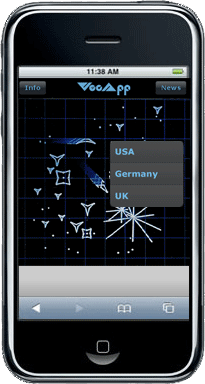 Oliver at vectrexmuseum.com has just released a Vectrex Locator web-app for mobile phones, for tracking up-to-the-moment, international, on-the-go Vectrex sales and news.
Oliver at vectrexmuseum.com has just released a Vectrex Locator web-app for mobile phones, for tracking up-to-the-moment, international, on-the-go Vectrex sales and news.
The Vectrex is close to Atari Asteroids’ heart: it was a vector screen home game system released in 1982, with a spaceship-shooting-things game (Mine Storm) Â installed on every unit. Â While they were only in stores for a year or two, they have an avid following to this day, and can often be found on sites like eBay.
The VecApp is a web app, in that it resides on a server and is accessed via the internet. Â It’s specially designed for mobile devices, and with a data connection, appears to function as any native app would.
VecApp features include:
- Displays Vectrex collectibles on different eBay markets
- Currency converter (updated several times on trade days)
- Internal clock including seconds (using your device´s time configuration)
- Actual Vectrex News (updates when loading the web-app)
- Answers the question “What the hack is a Vectrex?”
- Hidden Easter Egg
To install it, open www.vectrexmuseum.com/mobile/ with your mobile device, then tap “Add to Bookmarks†for easy, one-tap access.
For more information, visit vextrexmuseum’s VecApp site:Â http://vectrexmuseum.com/mobile/vecapp.php
Read our review of the Vectrex here.
TED Talk: How to Defend Earth Against Asteroids
Posted on November 30, 2011In this recent TED Talk, Phil Plait outlines steps to prevent giant asteroids from demolishing the planet.  This solution doesn’t involve photon cannons, but does use ion thrusters.
He mentions the B612 Foundation, which is an organization of other bona-fide scientists dedicated to this end.
Asteroids Movie Gets New Writer
Posted on November 12, 2011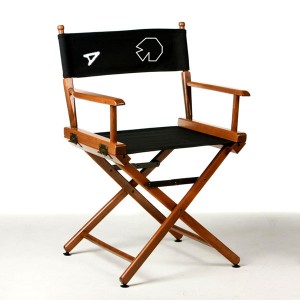 After two years in development at Universal Studios, the Atari Asteroids movie has a new writer: Evan Spilotopoulos. He recently worked on next summer’s Snow White and the Huntsman (watch the first trailer here), and past credits include a number of Disney animated sequels and prequels.
After two years in development at Universal Studios, the Atari Asteroids movie has a new writer: Evan Spilotopoulos. He recently worked on next summer’s Snow White and the Huntsman (watch the first trailer here), and past credits include a number of Disney animated sequels and prequels.
Read the Hollywood Reporter story here
For more about the Asteroids movie: www.atariasteroids.net/archives/tag/film
Atari Releases Asteroids: Gunner for iOS
Posted on November 10, 2011Atari released its latest official version of Asteroids today — Asteroids: Gunner, for Apple’s iPad, iPhone and iPod Touch.
Experience the next evolution in the legendary Asteroids franchise!
Blast your way through deadly asteroids fields and alien war ships to become the most wealthy and powerful Gunner in space history. Work your way to the top of the gritty crystal mining business by traversing through the galaxy and collecting the treasures of the cosmos. Upgrade your ship as you climb up the intergalactic ranks and become a force to be reckoned with!
Asteroids made its arcade debut in 1979, and was followed up by Asteroids Deluxe and home game console versions (Atari 2600 etc). Atari all but disappeared from the scene for a while, but returned with revamped versions of their classic titles starting last year. Asteroids Online for Facebook was among the first, now followed by Asteroids: Gunner for iOS.
We first heard about this title in September, when the Edmonton Sun ran an article about local Canadian game company Fluik being commissioned for the job. “[Fluik CEO] Rubba was headhunted by Atari after they played his game Gunner Galaxies — starring a spaceship-piloting chicken who also blasts incoming asteroids — at a conference earlier this year.” Rubba sounded psyched to work with Atari.
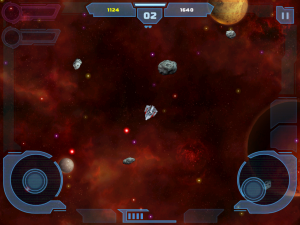 Asteroids: Gunner is similar in concept to Asteroids Online, but simplifies the sprawling universe to just 3 galaxies, and many ship options and variations to three (the original Dart, the heavy-duty Bomber, and the robust Miner). The plot is also slightly revised: instead of working for the good of your mining company, you’re out for personal wealth and glory (plus, saving the Earth).
Asteroids: Gunner is similar in concept to Asteroids Online, but simplifies the sprawling universe to just 3 galaxies, and many ship options and variations to three (the original Dart, the heavy-duty Bomber, and the robust Miner). The plot is also slightly revised: instead of working for the good of your mining company, you’re out for personal wealth and glory (plus, saving the Earth).
Both are more complicated than Asteroids (1979), where you are a polygon destroying other polygons.
The initial download is free from the iTunes App Store, and you accumulate in-game wealth from mined minerals for certain weapons upgrades. You have one ship and access to one galaxy. Further ships and galaxies can be purchased for the price of an average game, and there are online networking options.
The game play is fairly simple. The ship is locked in the screen’s center; one thumb controller scrolls the background, and the other is shooting plus aim. Unlike a lot of modern Asteroids clones, the graphics are sharp and uncluttered. And rather than a driving heavy metal soundtrack, the score has soothing Native American flute-like sounds with and a background beat.
In-game bonus items include gold, health restoration, and extra shields which function like a flower in Super Mario Brothers or power pellet in Pac-Man. You can also customize extra weapons, but again, they have a simple, straight-forward interface.
The game scales nicely, and is a pleasure to play on both iPad and the smaller iPhone (unlike Atari’s Greatest Hits, where some titles like arcade Asteroids are impossibly small on the iPhone/iPod — although it’s great otherwise). Of course, we’d rather have a beautiful, clunky vector screen, but you can’t carry that in your pocket.
Official Atari Asteroids: Gunner page: http://www.atari.com/games/asteroids_gunner/ios
More on Atari’s Online and Mobile strategy: http://www.atariasteroids.net/archives/457
Tobii Technology Builds Eye-Controlled Asteroids Cabinet!
Posted on November 06, 2011Tobii Technology has built a one-off Asteroids arcade cabinet, designed to showcase their eye-tracking technology. Â The game made its premiere at CeBIT in March, to demo eye-tracking on laptops. Â This is another step towards more natural human-machine interaction, and according to Tobii, much faster than hitting buttons or full-body motion sensors.
The full arcade version of Eye-Asteroids makes its debut on Tuesday, November 8, 2011, at the Dave and Buster’s in Times Square, New York, before heading off on a world tour. Â Known stops are London in late-November, and Las Vegas at CES next year.
The game is much closer to Missile Command than Asteroids, as you protect Earth from incoming ELEs (Extinction Level Events) by blasting them with lasers with your eyes. Â They could have used this technology to create Superman-Meets-Big-Buck-Hunter, but we approve of their choice.
The game’s debut corresponds with Tuesday’s near-Earth encounter with a real asteroid, that will pass by closer than the moon. Â Read about that here.
We’ll stop by Dave and Busters for a full review. Â Check back for that!
Engadget’s coverage of Tobii at CeBIT (includes video):
http://www.engadget.com/2011/03/01/tobii-and-lenovo-show-off-prototype-eye-controlled-laptop-we-go/
Pocket-lint’s report of Eye Asteroids:
http://www.pocket-lint.com/news/42895/tobii-eyeasteroids-arcade-machine-eye-controls
Tobii’s Site:
http://www.tobii.com/
Asteroid Buzzes Earth on Tuesday!
Posted on November 06, 2011On November 8, 2011, an asteroid named 2005 YU55 (hereinafter referred to as “Yolanda”) will pass .85 lunar distances from the Earth — closer than the moon! Â It has a 400 meter diameter, the size of an aircraft carrier, and is dark and nearly spherical. Â [Click the image above for an animated view of the asteroid’s path].
At its closest, Yolanda will be visible from the Earth’s southern hemisphere. Â Officials are employing one of the coolest-looking telescopes — Arecibo, star of “Goldeneye” and “Contact” — to create an extraordinarily detailed image and 3D model of the asteroid as it zips by.
Yolanda is classified as a “potentially hazardous object,” but it will not hit the Earth or moon. Â The only defensive action being taken on Tuesday is the introduction of Tobii Technology’s new eye-controlled version of Asteroids at Dave and Buster’s in Times Square. Â Read that story here.
The next time an object will pass this close to Earth (that we know about) is 2028, when asteroid (153814) 2001 WN5 will pass to within 0.6 lunar distances. Â In the mean time, we recommend that you find your nearest Atari Asteroids arcade machine and do your part.
NASA Near Earth Object Program page on Yolanda:Â http://neo.jpl.nasa.gov/news/news171.html
Monochrome Game Design: Parallax
Posted on November 03, 2011Zi Ye and Jesse Burstyn at Toasty Games (well, actually they are Toasty Games) are developing Parallax, a new game with a sharp black and white design. Â From their website:
Parallax is an interdimensional platforming and puzzle-solving game. The goal in each level is to reach the exit by travelling between two overlapping dimensions through rifts. Parallax challenges the player to think beyond the spatial boundaries of traditional platformers.
What caught our eye is the minimal, black and white design.  Parallax’s creators told ars technica that they tried out more realistic shaders and colors before settling on this scheme.  “It’s a striking, bold look, and fits the game’s play brilliantly.”  And speaking to DIYgamer, “We think this gives Parallax a rare level of visual cohesion.”
We here at AtariAsteroids.net don’t pay much attention to new (post-1979) games outside the Asteroids family, and even then, we mostly admire the elegant minimalism of the original. Â But we tip our hat to Parallax. Â It’s not being retro, visually busy, or cute. Â It’s a product of 21st century computing. Â But it boils the visuals down to simple lines, and in doing so, manages to create a rich, three-dimensional world with a timeless feel. Â We look forward to playing it!
Ye and Burstyn have just submitted a beta demo of Parallax to the 2012 Independent Game Festival (IGF).  Follow Parallax Game on facebook, Toasty Games on twitter, and visit their website.  Watch the IGF trailer below.
